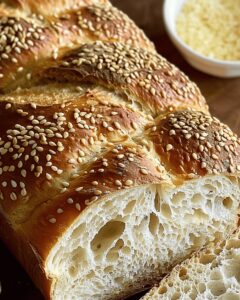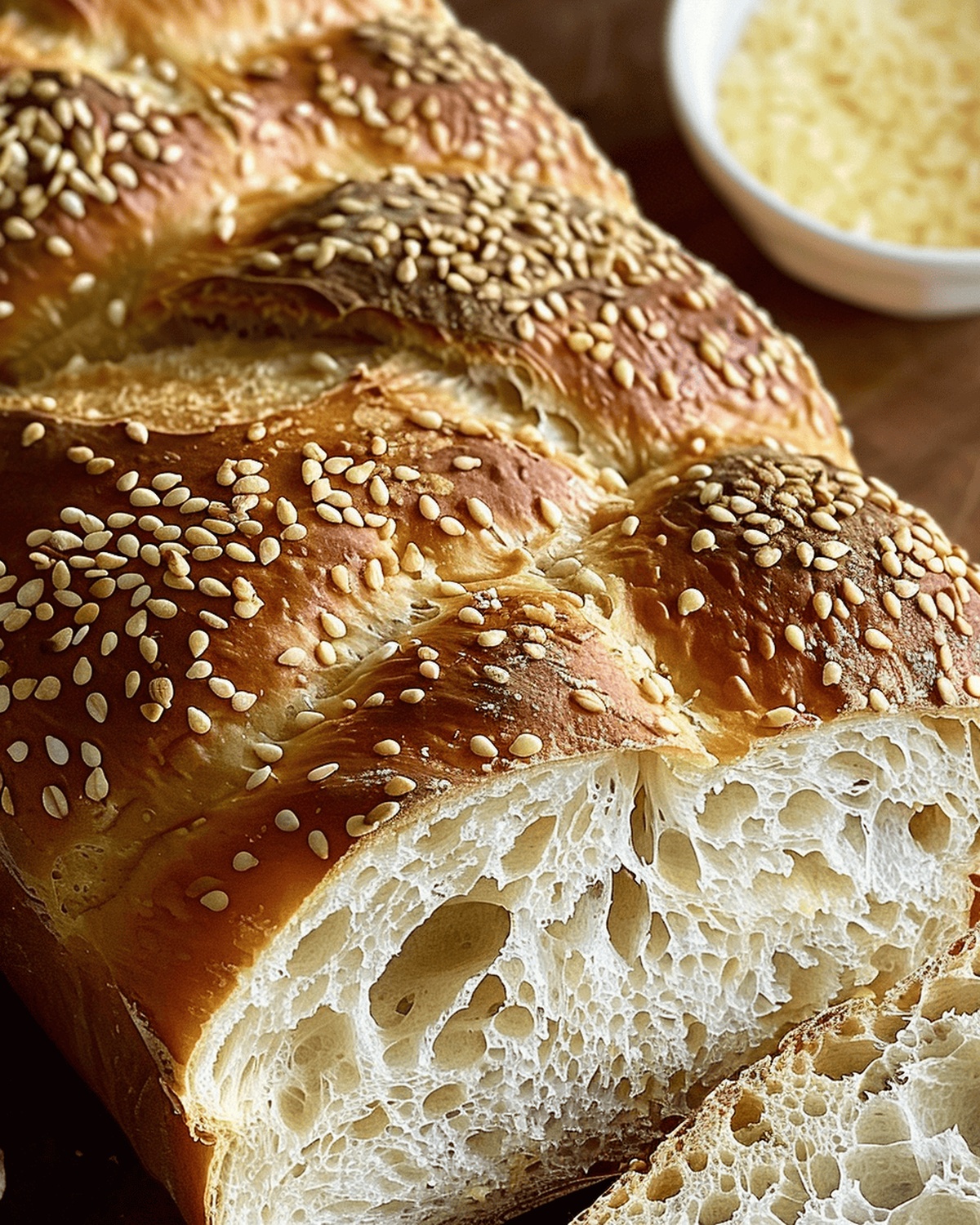The Best Italian Bread Recipe for Fluffy Homemade Bliss
Rustic Italian bread embodies the heart of mediterranean culinary traditions, bringing warmth and comfort to every kitchen.
Generations of families have perfected this simple yet soul-satisfying staple that connects people through shared meals.
Crisp crusts and soft interiors tell stories of regional techniques passed down through passionate home cooks.
Wheat’s golden essence reinvents into a canvas of texture and flavor that speaks directly to hunger and heritage.
Salt, yeast, and flour dance together in a timeless culinary ritual that transcends generations.
Skilled bakers understand the delicate balance of ingredients that create a perfect loaf, reinventing humble components into something magical.
This recipe promises an authentic experience that will transport you to sun-drenched Italian countryside kitchens.
What Makes Italian Bread So Classic
Simple Ingredient List for Italian Bread
Wet Ingredients:Leavening and Sweetening Agents:Dry Ingredients:Your Easy Guide to Baking Italian Bread
Step 1: Warm The Milk
Heat whole milk in a small saucepan or microwave until warm to touch. Aim for around 110 degrees Fahrenheit.
Step 2: Activate The Yeast
Pour warmed milk into a stand mixer bowl. Add:Stir ingredients together and let sit until foamy.
Step 3: Prepare Dough Base
Heat water in microwave until hot but not boiling. Add to mixer bowl:Step 4: Mix Flour
Use dough hook to combine ingredients:Step 5: First Dough Rise
Step 6: Shape The Loaves
Step 7: Final Rise
Step 8: Bake The Bread
Step 9: Cool And Serve
Smart Tips to Perfect Your Italian Bread
Save and Reheat Italian Bread Without Losing Texture
Dishes That Match Well with Italian Bread
Flavor Variants for Traditional Italian Bread
Print
Italian Bread Recipe
- Total Time: 1 hour 40 minutes
- Yield: 12 1x
Description
Rustic Italian bread brings Mediterranean warmth to your kitchen with its golden crust and tender crumb. Kneaded with simple ingredients and baked to perfection, this authentic loaf invites you to savor classic Italian baking traditions.
Ingredients
Flour and Yeast:
- 6 cups all-purpose flour, plus more for dusting and baking sheets
- 2 (¼-ounce) packets active dry yeast (4 ½ teaspoons)
Liquids and Fats:
- 2 cups hot water
- ½ cup whole milk
- ¼ cup olive oil, plus more for the bowl
Seasonings and Other Ingredients:
- ½ teaspoon plus 3 tablespoons granulated sugar, divided
- 1 tablespoon kosher salt
- 4 tablespoons sesame seeds, divided (optional)
Instructions
- Gently warm milk in a saucepan or microwave until lukewarm, ensuring it reaches approximately 110℉.
- Pour warmed milk into a stand mixer bowl, sprinkle yeast and a pinch of sugar, then allow mixture to become frothy and activate, roughly 6-7 minutes.
- Heat water in microwave until comfortably hot but not boiling, around 130℉.
- Add hot water, olive oil, remaining sugar, and salt to the yeast mixture, creating a foundational liquid base.
- Incorporate flour gradually using a dough hook, mixing on low speed until a rough, shaggy texture develops.
- Increase mixer speed to medium, continuing to add flour incrementally until a soft, slightly sticky dough forms.
- Transfer dough to an olive oil-coated bowl, ensuring complete surface coverage, and allow to rise in a warm environment until volume doubles.
- Prepare baking sheets by lining with parchment and dusting lightly with flour.
- Deflate dough and place on a floured workspace, handling gently to maintain softness.
- Divide dough into two equal portions, stretching each into a rectangular shape approximately 12 inches long.
- Create loaf shapes by folding long edges toward center, then rolling lengthwise into elongated forms or rounded boules.
- Dust loaves with additional flour if not using sesame seeds.
- Position loaves seam-side down on prepared baking sheets.
- For sesame seed variation, brush loaves with water and generously sprinkle seeds.
- Using a sharp knife, score diagonal cuts across loaf surfaces to promote even rising.
- Cover loaves with a clean towel and allow brief secondary rise for approximately 30 minutes.
- Preheat oven to 400℉, positioning racks to divide oven into thirds.
- Bake loaves for initial 15 minutes, then rotate sheets between racks and front-to-back.
- Continue baking until crusts achieve deep golden-brown coloration, approximately 10 additional minutes.
- Verify doneness by tapping loaf bottom – a hollow sound indicates perfectly baked bread.
- Allow loaves to cool slightly before slicing to maintain structural integrity.
Notes
- Crafting this rustic Italian bread requires patience and love, transforming simple ingredients into a mouthwatering masterpiece.
- Precise temperature control matters when activating yeast, ensuring a soft, pillowy texture that melts in your mouth.
- Kneading develops gluten, creating that signature chewy interior and crisp golden crust that defines authentic homemade bread.
- Prep Time: 1 hour 15 minutes
- Cook Time: 25 minutes
- Category: Breakfast, Snacks, Appetizer
- Method: Baking
- Cuisine: Italian
Nutrition
- Serving Size: 12
- Calories: 180
- Sugar: 2 g
- Sodium: 200 mg
- Fat: 4.5 g
- Saturated Fat: 0.5 g
- Unsaturated Fat: 4 g
- Trans Fat: 0 g
- Carbohydrates: 32 g
- Fiber: 1 g
- Protein: 6 g
- Cholesterol: 5 mg


Alex Reed
Founder & Lead Content Writer
Expertise
Recipe Development and Testing, Culinary Education, Food Writing and Blogging, Sustainable Cooking Practices, Global Cuisine Exploration
Education
Johnson & Wales University
Le Cordon Bleu Paris
Alex Reed is an inventive chef and food creator with a passion for dishes that balance taste, health, and sustainability.
Trained at Portland Community College and holding an Advanced Pastry Arts certificate from Oregon Culinary Institute, Alex brings more than 10 years of practical culinary experience to every recipe he develops.
His background uniquely blends traditional cooking skills with modern, mindful eating principles. As the founder of Beard and Bonnet, Alex creates recipes that encourage readers to cook confidently.